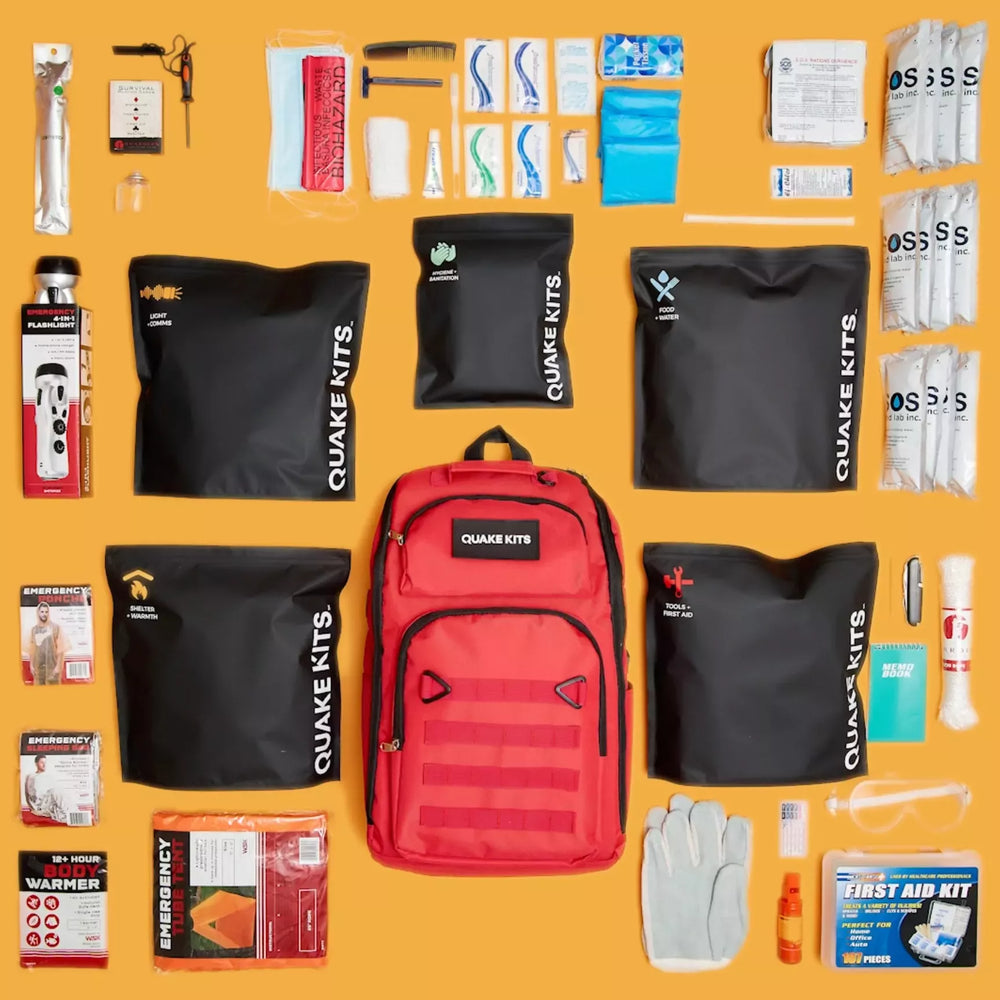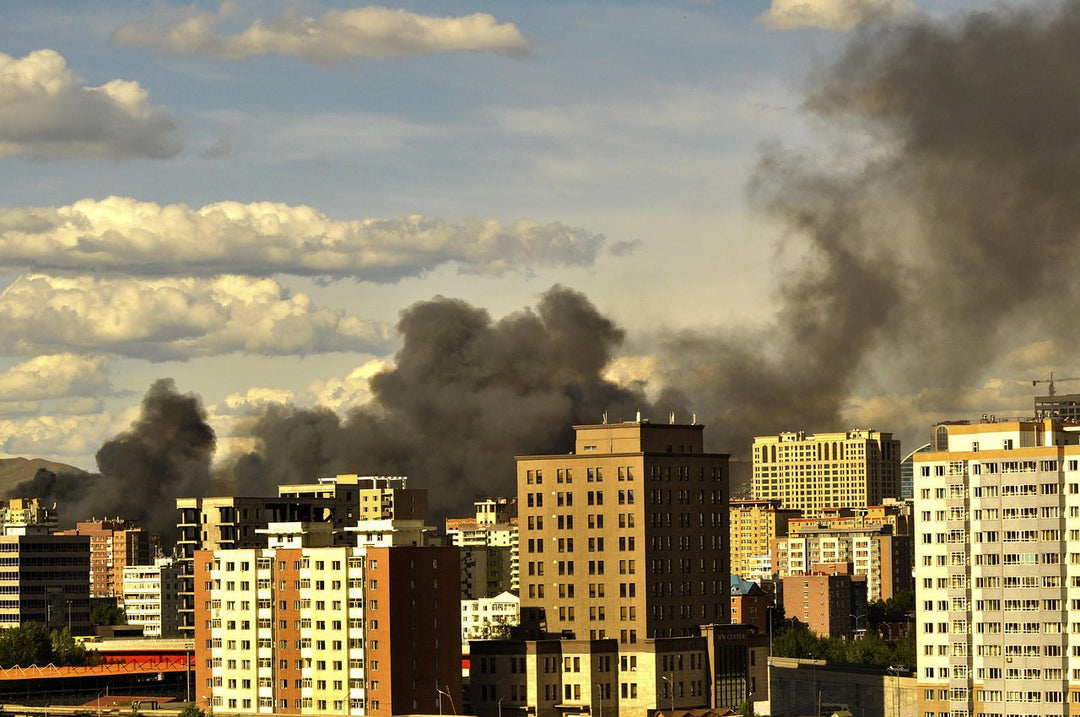La fragilidad de la cadena de suministro moderna: qué almacenar en caso de emergencia
Cuando el mundo se acabe
A principios de 2020, un nuevo virus se propagó por todo el mundo. Lo que siguió no fue solo una crisis sanitaria, sino un colapso total de la cadena de suministro global. Retrasos en los envíos, escasez de productos, estantes vacíos y precios disparados se convirtieron en la nueva normalidad. Hoy en día, las interrupciones persisten. Desde guerras en Europa y Oriente Medio hasta desastres naturales en Asia y América, nuestros sistemas de entrega «justo a tiempo» demuestran su absoluta vulnerabilidad.
En cualquier emergencia, ya sea un desastre natural, una crisis económica, un ciberataque o un conflicto, comprender cómo fallan las cadenas de suministro y qué almacenar puede marcar la diferencia entre la tranquilidad y la crisis.
Antes de que se vacíen los estantes: Sepa a qué se enfrenta
¿Por qué se rompen las cadenas de suministro?
La mayor parte de lo que compramos, incluyendo alimentos, medicamentos, pilas e incluso agua embotellada, llega a través de una frágil red global de fábricas, barcos, almacenes y camiones. Este sistema funciona eficientemente cuando todo marcha bien. Pero cuando falla un eslabón, como una huelga portuaria, una escasez de petróleo o el cierre de fronteras, toda la cadena se ralentiza o se detiene.
Incluso las perturbaciones menores pueden tener repercusiones en todo el mundo. Una sequía en Taiwán puede ralentizar la producción de chips. Un ciberataque a una empresa naviera puede retrasar el suministro de alimentos y combustible. Una guerra en el extranjero puede disparar el precio de los fertilizantes, elevando así los costos de los alimentos a nivel mundial.
¿Qué significa esto para ti?
Si los camiones dejan de circular, los estantes se vacían rápidamente. Las tiendas suelen tener solo entre 3 y 5 días de inventario, y en una crisis, las compras de pánico aceleran el proceso. Para cuando te das cuenta de que hay escasez, puede que ya sea demasiado tarde.
En tiempos de crisis: ¿Qué almacenar antes de la avalancha?
Aquí tienes una lista de artículos de alta prioridad que suelen agotarse primero y pueden ser difíciles de reponer cuando las cosas salen mal:
1. Suministros para agua y filtración
-
Almacenar al menos 1 galón por persona por día (mínimo 3-7 días).
-
Ten a mano opciones de respaldo como pastillas potabilizadoras de agua , pajitas y botellas purificadoras , o bolsas de agua de emergencia .
2. Alimentos no perecederos
-
Conservas (sopas, legumbres, carnes, verduras)
-
Alimentos secos (arroz, pasta, avena, leche en polvo)
-
Comidas liofilizadas con larga vida útil como Alpine Aire .
- Las raciones y barras alimenticias de emergencia son una excelente opción para el almacenamiento sencillo de alimentos a largo plazo.
3. Medicamentos y primeros auxilios
-
Si es posible, tenga a mano un suministro de medicamentos para más de 30 días.
-
Analgésicos , medicamentos para la alergia , antiácidos , antidiarreicos
-
Botiquines de primeros auxilios con material para traumatismos , antisépticos y guantes.
4. Higiene y saneamiento
-
Papel higiénico, jabón, cepillos de dientes, productos de higiene femenina
-
Desinfectante de manos , toallitas desinfectantes , bolsas de basura
-
Sistemas de inodoros de emergencia en caso de fallo de la fontanería
- Un kit de higiene de emergencia
5. Energía e iluminación
-
Pilas adicionales (AA, AAA, etc.)
6. Combustible y artículos esenciales para cocinar
-
Cartuchos de propano, butano o isobutano
7. Herramientas de comunicación
-
Walkie-talkies o mensajeros satelitales
-
Contactos de emergencia impresos y mapas
8. Dinero y documentos importantes
-
Billetes y monedas pequeñas (los cajeros automáticos podrían no funcionar).
-
Copias en papel de documentos de identidad, pólizas de seguro, títulos de propiedad
9. Artículos para bebés y mascotas
-
Pañales, leche de fórmula, toallitas húmedas para bebés
-
Alimento para mascotas , correas , medicamentos o un kit completo de emergencia para mascotas.
10. Equipo de protección
Después de que pase la tormenta: Prepárense para la escasez a largo plazo.
Incluso una vez superada la emergencia inmediata, las cadenas de suministro pueden tardar semanas o meses en recuperarse. Durante la pandemia de COVID-19, algunos productos como la levadura, las piezas de bicicletas y la munición fueron difíciles de encontrar durante más de un año. Las heladas de 2021 en Texas provocaron interrupciones generalizadas en el suministro de plásticos y autopartes. La sequía de 2024 en Sudamérica afectó las exportaciones mundiales de cereales.
Prepárate no solo para el momento, sino también para las consecuencias. Céntrate en alimentos no perecederos, métodos de cocción alternativos y fuentes de agua sostenibles. Piensa en términos de redundancia y ten planes de contingencia.
Las emergencias no esperan el momento oportuno. Cuanto mejor preparado estés, menos dependerás de una cadena de suministro inestable cuando las cosas se compliquen. Empieza a crear tu reserva de emergencia ahora, no cuando ya no queden productos en los estantes.
En Quake Kits, nos especializamos en kits de supervivencia de emergencia de alta calidad, almacenamiento de agua a largo plazo y suministros de supervivencia listos para usar que mantienen su hogar, oficina o vehículo preparados para cualquier eventualidad. Para obtener más información, visite ready.gov .






Dejar un comentario